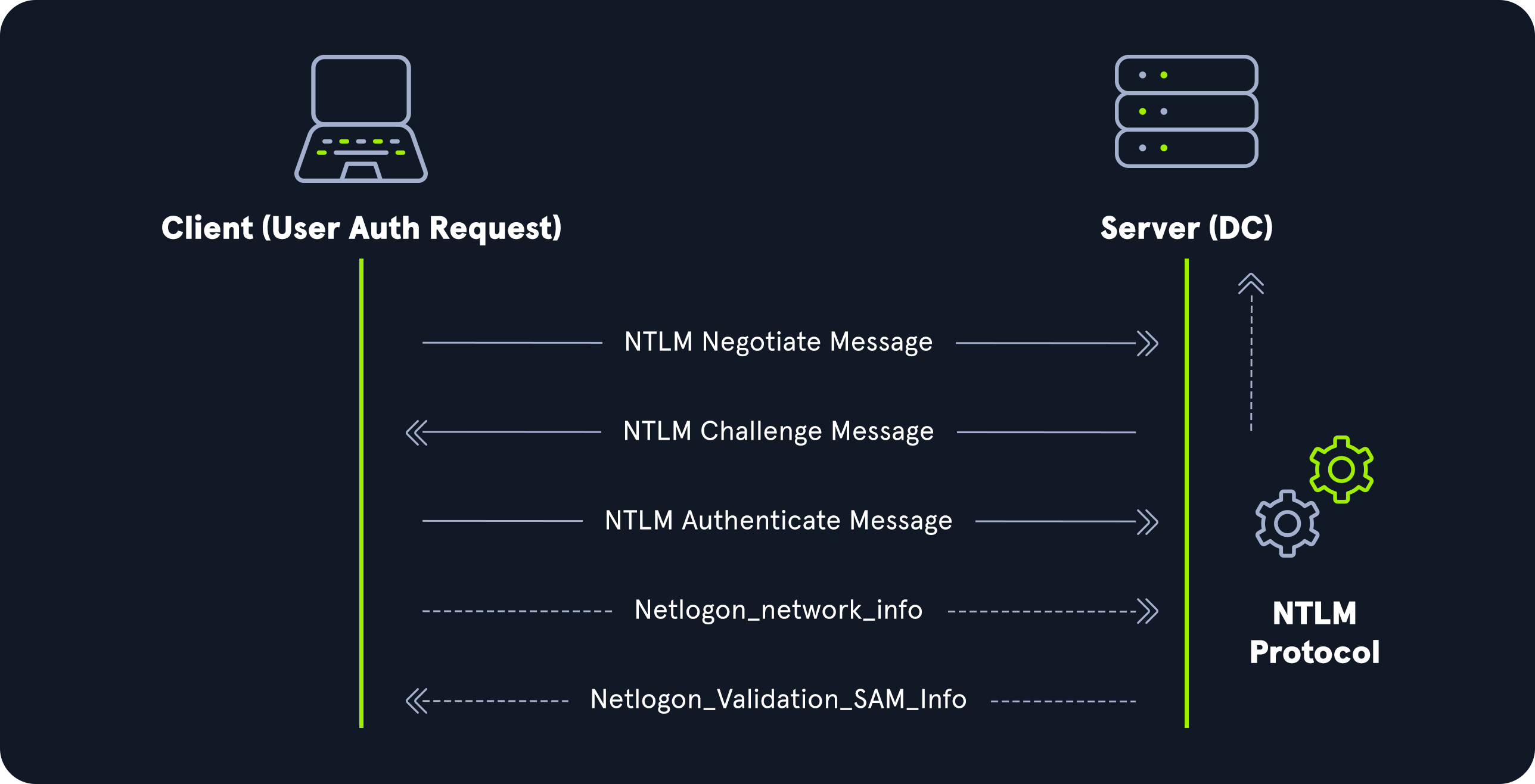NTLM Authentication in Active Directory
Introduction:
In Active Directory (AD), apart from Kerberos and LDAP, various other authentication methods are used by applications and services. These include LM, NTLM, NTLMv1, and NTLMv2. Understanding the differences between these hashes and protocols is crucial for securing AD environments.
Hash Protocol Comparison:
| Hash/Protocol | Cryptographic technique | Mutual Authentication | Message Type | Trusted Third Party |
|---|---|---|---|---|
NTLM | Symmetric key cryptography | No | Random number | Domain Controller |
NTLMv1 | Symmetric key cryptography | No | MD4 hash, random number | Domain Controller |
NTLMv2 | Symmetric key cryptography | No | MD4 hash, random number | Domain Controller |
Kerberos | Symmetric key cryptography & asymmetric cryptography | Yes | Encrypted ticket using DES, MD5 | Domain Controller/Key Distribution Center (KDC) |
| Hash Type | Example |
|---|---|
LM Hash | 299bd128c1101fd6 |
NTLM Hash | Rachel:500:aad3c435b514a4eeaad3b935b51304fe:e46b9e548fa0d122de7f59fb6d48eaa2::: |
NTLMv1 Hash | u4-netntlm::kNS:338d08f8e26de93300000000000000000000000000000000:9526fb8c23a90751cdd619b6cea564742e1e4bf33006ba41:cb8086049ec4736c |
NTLMv2 Hash | admin::N46iSNekpT:08ca45b7d7ea58ee:88dcbe4446168966a153a0064958dac6:5c7830315c7830310000000000000b45c67103d07d7b95acd12ffa11230e0000000052920b85f78d013c31cdb3b92f5d765c783030 |
Domain Cached Credentials (MSCache2) Hash | $DCC2$10240#bjones#e4e938d12fe5974dc42a90120bd9… |
Note: Neither LANMAN nor NTLM uses a salt.
NTLM Authentication Request:
LM Hash :
LM hashesare the oldest password storage mechanism in Windows, used until Windows Vista/Server 2008.- Limited to
14 characters, case-insensitive, and vulnerable due to the hashing algorithm weaknesses. - Encrypted using
DESkeys created from7-characterchunks and concatenated to form theLM hash. - Disallowing
LM hashesusing Group Policy is recommended.
NTHash (NTLM):
NTLM hashesare used on modern Windows systems and are an improvement over LM hashes.- Derived from the MD4 hash of the
little-endian UTF-16value of the password. - Vulnerable to offline
brute-force attacksbut more secure than LM hashes. - Used in a challenge-response authentication protocol for network authentication.
NTLMv1 (Net-NTLMv1):
- An improvement over
NTLM, but still uses theNT hashalong with theLM hash. - Vulnerable to certain attacks and can be cracked offline if captured.
- Used in challenge-response authentication with a
24-byteresponse to an8-bytechallenge.
NTLMv2 (Net-NTLMv2):
- Introduced in Windows NT 4.0 SP4 and became the default since Server 2000.
- More secure than
NTLMv1, doesn’t use theLM hash, and usesHMAC-MD5for challenge-response. - Sends two responses to an 8-byte challenge, including
HMAC-MD5hash of the user’s credentials.
Domain Cached Credentials (MSCache2):
MSCache2is used when adomain-joinedhost can’t communicate with a domain controller.- Hosts save the last ten hashes of domain users in the registry
HKEY_LOCAL_MACHINE\SECURITY\Cache. - Hashes cannot be used in
pass-the-hashattacks and are slow to crack.
Conclusion
Understanding the various hash types and authentication protocols in Active Directory is essential for maintaining a secure environment. While Kerberos is preferred, it’s crucial to implement proper security measures for LM and NTLM to prevent potential attacks. Being aware of the strengths and weaknesses of each hash type helps in designing effective defense strategies for AD environments.

